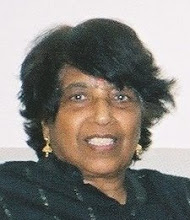
``NALAGIRI DAMANAM" or ``Taming Nalagiri, the mad elephant" a dance drama composed by Prof. V. Subramaniam was presented in the Kathakali style by Margi Kathakali Troupe, Thiruvananthapuram as the world premiere on December 22 at the Indian Fine Arts Society. For such a unique experience of traditional Kathakali there were remarkably few in the audience. The heavy rain and stagnated water may have kept them away. This dance drama was conceived in the Dima genre, stressing the Veera and Raudra rasas. The original script in Sanskrit by Prof. V. Subramaniam was adapted to suit the Kathakali format by M. Madhavan Nair of the Margi performing group. The music in the original Carnatic style had been adapted to suit the ``sopanam'' style of singing. ``Nalagiri Damanam" narrates the story of the subduing of the mad elephant Nalagiri by the Buddha. Prince Ajatasatru wants to take over the throne from his father King Bimbisara after killing him but is afraid of popular uprising and the Buddha's disapproval. His cousin Devadatta, jealous of the Buddha, suggests sending a mad elephant Nalagiri to attack him clearing the way for the prince. The mad elephant however is subdued by the Buddha's merciful glance.
The customary Tirainokkam to declare their characters was done with the characteristic aplomb by the Tadi character of Ajatashatru, the Katti character of Devadatta and the Pacha character of the King Bimbisara. Each showed the differences very sharply. The Tadi for the vicious, vile demonic type with the green background on the face broken by a red patch and black surrounding the eyes, a white blob on the nose showing aggressive and evil character while the Katti shows a strange savagery but still have some nobility. The pacha is for the sattvika characters with a light green make up just broken by brilliant coral lips, the face framed by a white chutti made of rice paste with lime to symbolise inner refinement and heroism with a moral stand point.
All these characters were well-defined and suited the different types in a story. It was a pleasure to watch Margi Vijayan Pillai in the Pacha vesham of King Bimbisara, Margi Vijayakumar who did an excellent female role of Queen Rasamanjari, Inchakkad Ramachandran Pillai in the Katti role of Devadatta was brilliant especially when showing the maddened elephant, Margi Suresh did the Tadi role of Ajatashatru with the customary cries and the aggressive body language. The role of the mahout was played by Margi Harivalsan. The singers, Kalamandalam Haridas and Margi Nandakumar, brought alive the mood even though they were not very familiar with the text.
Percussions of Chendai was played by Kalamandalam Krishnadas and Maddalam by Kalamandalam Raveendran. The make-up artistes were R. L.V. Somadas, Thankappan Pillai and Thankappan.
The play was directed by Jaya Subramaniam.




